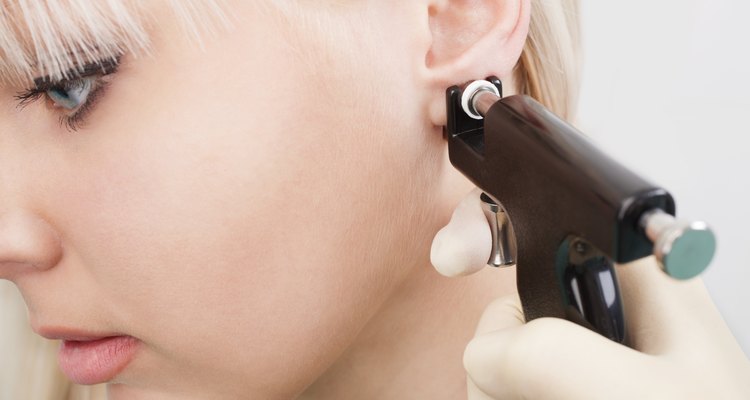
Fly_dragonfly/iStock/Getty Images
Ear piercing is a common procedure, and complications are rare. However, piercers are human, and mistakes can occur. Minimize your risks by shopping around. Select a professional piercer with a clean, efficient shop and sterile equipment. If a mistake does occur, address it immediately, before the piercing has a chance to heal. Check with your doctor if you have any concerns about the appearance or healing process of a piercing.
Uneven Holes
Uneven holes occur when one ear is pierced slightly higher or off to one side from the other. Although there is no medical concern with uneven holes, some people do not like the appearance. Minimize your chances for uneven holes by having the piercer mark your ears with a marker before piercing them. Study the marks in a mirror before approving the piercing.
If your holes are uneven, the only way to correct the problem is to have them re-pierced. Healing generally takes six to eight weeks, and the earrings must be removed. You can have the re-piercing performed immediately if there is room between the old hole and the new piercing, but having a new hole placed directly beside the original piercing can increase the risk of tearing.
Crooked Piercing
A crooked piercing occurs when the hole is not placed directly through the earlobe. It may be higher at the front or back. Like uneven holes, crooked piercings are not dangerous, but may be unsightly. Remove the earring and allow the original piercing to heal completely before attempting to re-pierce it. If scar tissue develops, have the new piercing placed slightly higher or lower than the original.
Tearing
Tearing can occur during the piercing process if the piercer is unsteady or has difficulty placing the earring in your ear. Tearing can also occur while the piercing is healing, or even long after it heals if you get your earring caught in clothing, other jewelry or hair. Choose an experienced professional piercer to minimize the risk for tearing during the piercing process. Holes that are located very close to the bottom or side of your ear are at higher risk for future tearing, so have your holes placed in the center of the earlobes.
If a piercing tears, seek medical attention. Most tears are minor and heal easily, but may lead to scarring. Particularly bad tears may require stitches. Tears can get infected if not properly treated.
Infection
Infection is a risk for any piercing, but some piercings are more likely to get infected. Professional piercers know what to look out for, but you are ultimately responsible for your own body. Do not get your ears pierced if the skin is irritated or inflamed. Avoid moles and bumps. Check with your doctor before getting pierced if you have any medical conditions such as heart problems or diabetes.
Signs of infection include redness, pain, discharge and swelling. If you notice any unusual symptoms, contact your doctor right away.
Earring Rejection
Earring rejection occurs when your body does not tolerate the metal from which the earring is made. Sensitivity to nickel is common, but many people are sensitive to other metals as well. Titanium, surgical steel and 18-karat gold are among the best choices for new piercings. If you know you have trouble tolerating a particular metal, discuss your sensitivity with your piercer in advance.
The signs of earring rejection mirror those of infection. Look for swelling, thin and weepy discharge, redness and itching. If you develop sensitivity, ask your piercer to replace the earrings. Never try to change a new piercing yourself.
Related Articles

How to Change Pierced Earrings
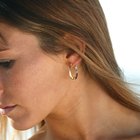
How Long After Piercing Can You Wear ...

Why Do People Pierce Their Ears?
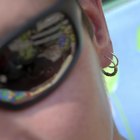
Places to Pierce Your Ear

How to Keep a Piercing From Rejecting

How Do They Pierce Your Ears With ...
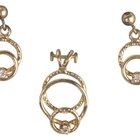
How Long After Piercing Can You Change ...

How to Get a Guiche Piercing

Male Nipple Piercing Information

How Long Do I Have to Wait to Change My ...

What Is Bio-Flex Made of for Piercings?

Nose Ring Problems

Types of Piercing Needles

Nose Hoop Vs. Stud

How to Gauge Your Ears Without Tapers

Facts on Nose Piercings

How to Repair Ear Gauges

How Long Do You Keep Your Earrings in ...
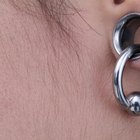
Ear Gauge Problems

How to Gauge the Ears Right After the ...
References
Writer Bio
Lisa Fritscher is a freelance writer specializing in disabled adventure travel. She spent 15 years working for Central Florida theme parks and frequently travels with her disabled father. Fritscher's work can be found in both print and online mediums, including VisualTravelTours.com. She holds a Bachelor of Arts in psychology from the University of South Florida.
Photo Credits
Fly_dragonfly/iStock/Getty Images